In our previous article on why endurance athletes should do high-intensity strength training, sports scientist, coach and ski mountaineer Susi Kraft lay out five reasons why it is essential. In this article, Susi explains and demonstrates how to perform 12 strength building exercises. Press play on the video below and scroll down for her instructions on how to perform each exercise correctly and safely.
Follow this strength training session on your Suunto!
With the help of SuuntoPlus Guides, you can also follow this strength training workout on your Suunto watch. Before starting a 'weight training' workout on your watch, go down to exercise options and select ’12 Strength Exercises’ from the SuuntoPlus Guides menu. Start the workout and you will see step-by-step guidance on one of your watch screens. Swipe left until you see it. Press lap (lower right button) to advance from one step to the next one. Watch the video, activate the strength training guide for your workout and get to work. Time to get stronger!
Learn more about SuuntoPlus Guides here.
If you are new to strength training, keep in mind it’s better to begin using your own body weight to begin with and to find a trainer who can personally show you how to do the movements with proper form.
By Susi Kraft
Lifting heavy weights not only improves your performance as an endurance athlete, but done regularly, it also helps to avoid acute and overuse injuries caused by repeated loads while downhill running or skiing, for example.
Learn to perform the 12 exercises below with the proper technique and you’ll boost your vertical power and endurance!
Before you start
Make sure you develop a baseline of strength before you start lifting heavy loads. This can be achieved via exercises performed with your body weight only. Developing core strength is an essential preliminary to moving on to heavy weights. Without it, you risk injury. Once you have a decent level of base strength, perform the exercises below with a focus on technique and a lighter weight. Only increase the weight when you have good control.
What is heavy resistance training
Heavy resistance training aims to optimize your maximum strength and explosive strength. It’s one of the most effective forms of strength training. Performed regularly it will let you gain strength much faster than body weight exercises.
How and when to train
Endurance athletes normally have plenty of time for strength training during the off-season or during the base training phase. For example, as a trail runner you can use winter to prepare or as a skimo athlete you can make summer and early autumn your time to build strength.
I recommend dedicating about two months for intense and specific high resistance training. Try to complete two sessions per week.
- All big muscles should be targeted
- Focus on complex, full-body exercises
- Train with high loads and few repetitions
- Eight to 12 repetitions
- Three sets
- Two minutes pause between sets
- At least two days off between strengths training sessions (endurance sessions possible)
How much weight to choose
High resistance training is performed at about 80 % of your one-repetition maximum (1RM). If you don’t want to test out your 1RM for each exercise (as that is really intense and requires a perfect technique already) you can just use a weight that allows you to perform a maximum of 8 to 12 repetitions.
Which exercises to choose
- Upper-body and lower-body exercises.
- Choose multi-joint exercises (such as a squat), exercises capable of heavy loads (such as a deadlift), and exercises that focus on power development (such as a box jump).
- Also choose unilateral (one leg exercises such as split squats or step-ups) and bilateral exercises such as deadlifts.
Now let us introduce you to the most important strength exercises for endurance and mountain athletes. You don’t have to perform them all every time, but make sure to choose exercises in an order just described.
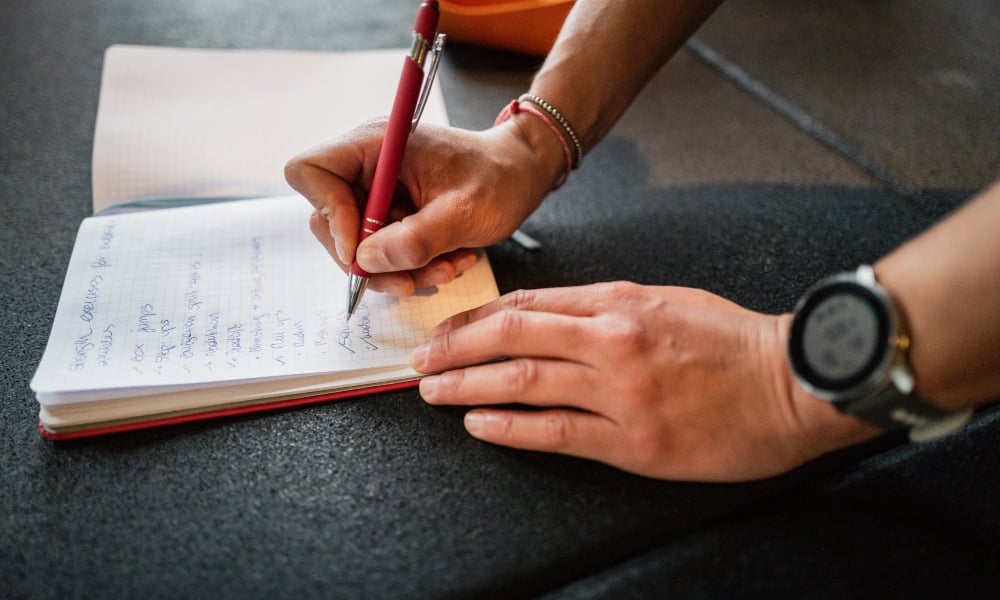
12 strength exercises for endurance athletes
WARM UP
- 15 minutes of cycling, rowing or treadmill running
- Dynamic sretching (especially ankle, hips, spine, shoulders)
- 5 x 30 seconds skip rope
- If you like you can also perform some easy core exercises or a brief cross fit workout – just make sure not to push too hard.
Strength training exercises
- Box jumps
- Abduction
- Bulgarian split squats
- Pull ups
- Squats
- Push ups
- Step ups
- Deadlifts
- Heel raises
- Romanian deadlifts
- Barbell row
- Single leg hip thrusts
Box jumps
Box jumps are great for developing power through the lower-limb extensor muscles.
Stand tall with a box (40 to 60 cm high) in front of you with feet hip-width apart and arms by your sides. Now bend the knees and immediately move back up.
Jump onto the box as explosively as possible. Try to land gently on both feet and extend your hips and knees on top. Step down and repeat three sets of five to eight repetitions. Try to make each jump good quality in terms of technique and form. Remember to always perform jumps at the beginning of your workout, as they are most demanding.
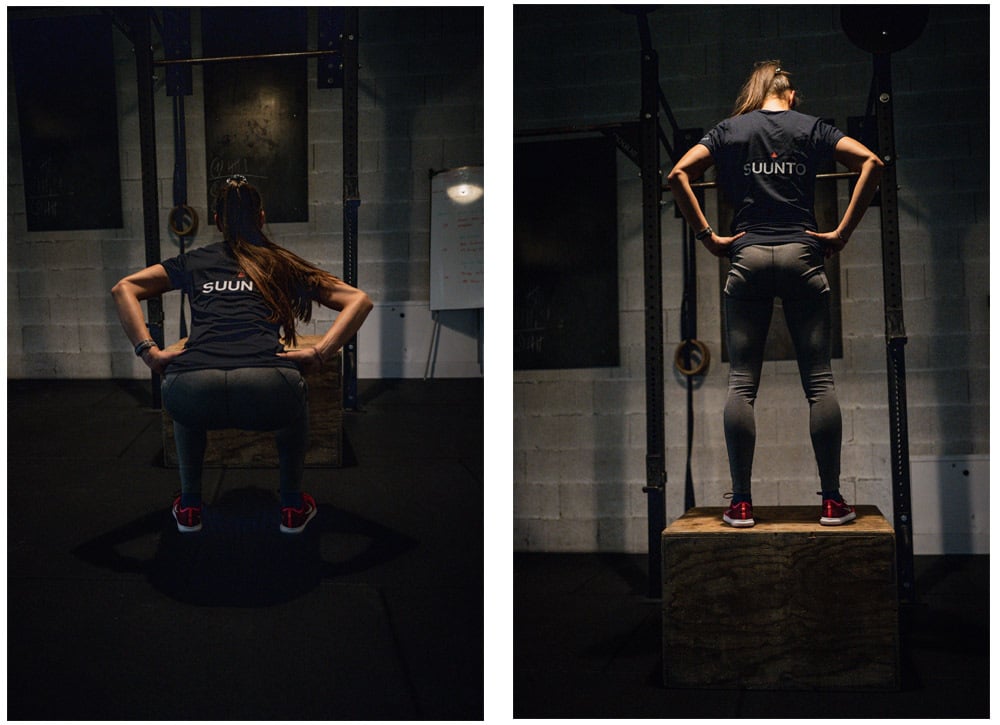
Abduction
Use a stretch loop or elastic band. Wrap it around your thighs or lower legs (which is more demanding). Shift your weight to one leg and try to stand stable while extending the other leg out to the side. Do two sets of 12 repetitions for each leg.
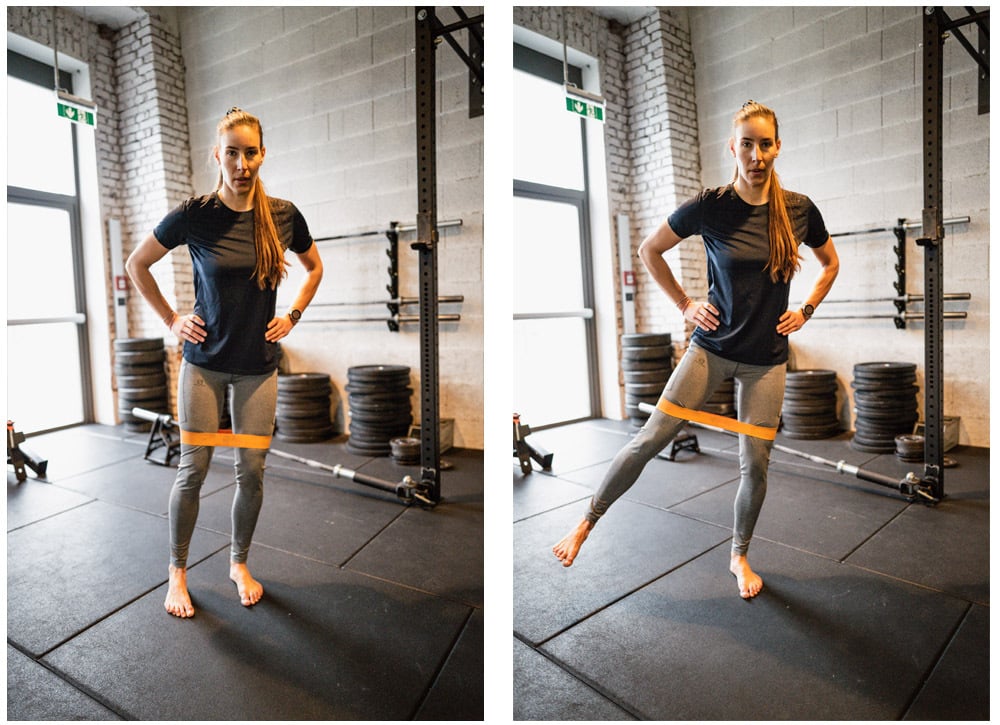
Bulgarian split squats
Stand in lunge position. Heighten one leg on a box. Lower your body by bending the front leg to about 90° knee angle and slowly get up again. Use a kettle bell, two dumbbells or a barbell to add weight. Make sure your front knee does not shift out to either side while going down and up.
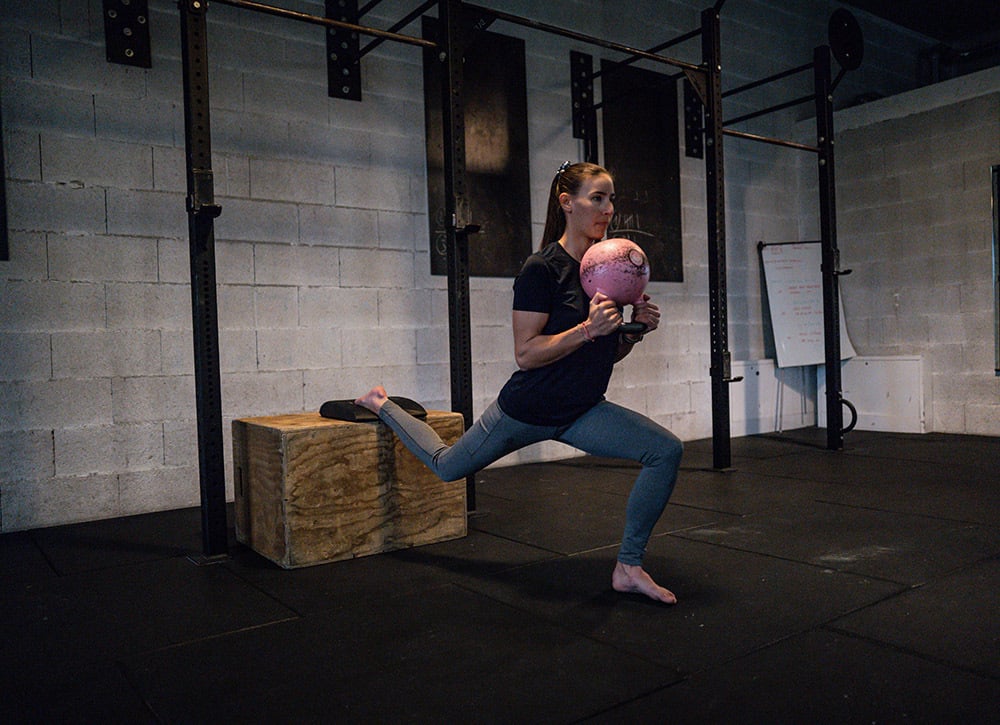
Pull ups
With hands shoulder width apart, begin by hanging from a bar with arms fully extended. Pull yourself toward the bar with your chin clearing the bar. Lower yourself slowly and repeat. If you can’t perform a single clear pull up you can use resistance bands to support yourself.
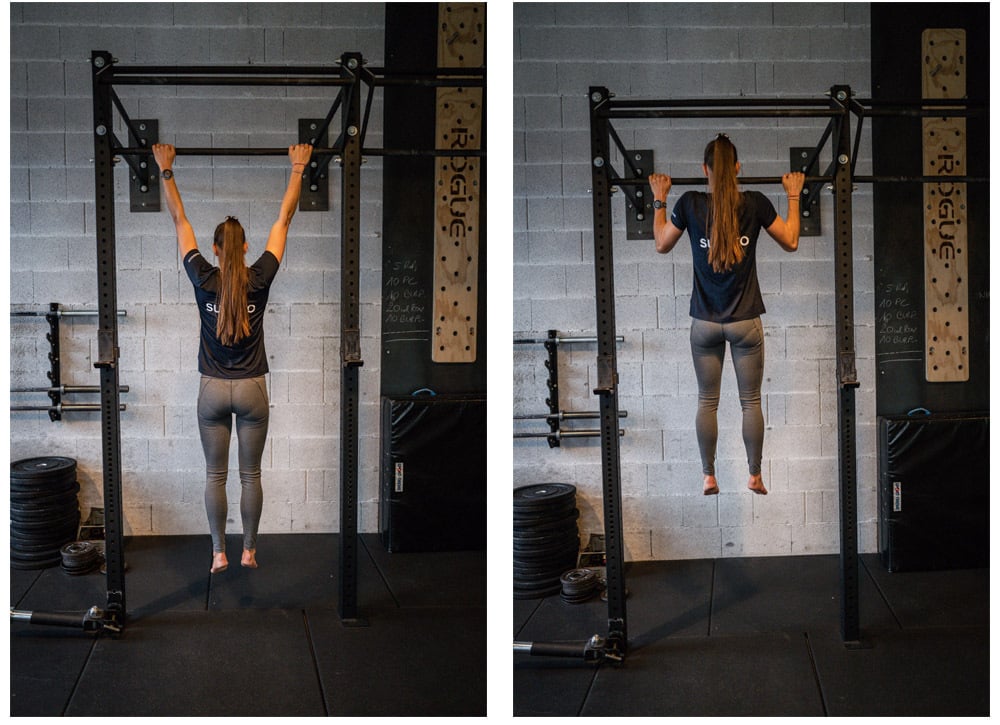
Squats
Put a barbell on your neck/shoulders/upper back. Squat down as far as possible (maintaining a stable spine). Push back up. Always keep the barbell over your middle foot and the pressure distributed over your whole sole. Focus on your knees (mirror). They should never shift to medial.
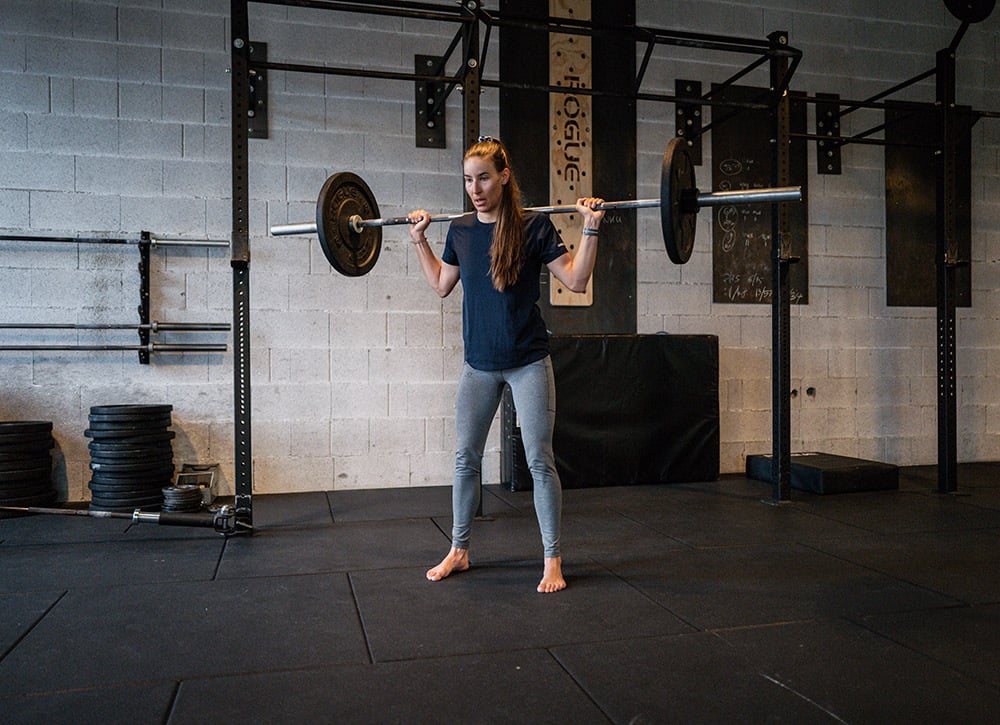
Push ups
Start with hands shoulder width apart underneath your shoulders. Lower your chest to the ground and push back up. Keep your body stable and make sure not to bend your lower spine. If you can’t perform a single push up on the ground use a box or table to base your hands on.
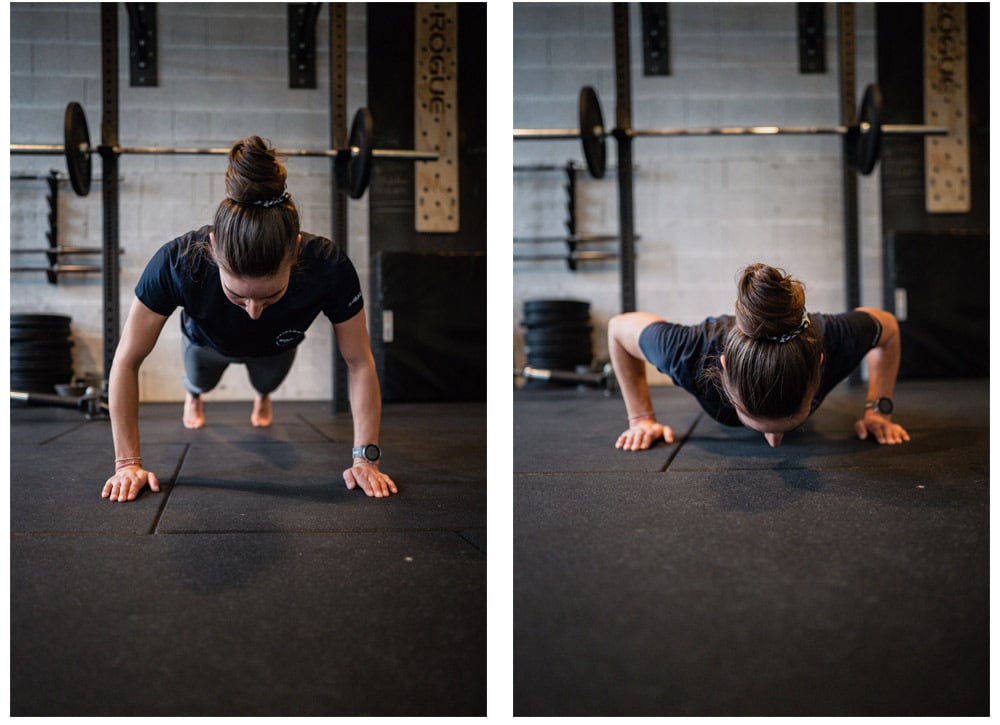
Step ups
Step on a box that's about the same height as your knees. Stand up straight and step back down. Repeat eight to 12 times for each leg. Use two dumbbells or a barbell to add weight. Make sure to keep the pelvis level throughout and focus on your glutes and quads as you step up.
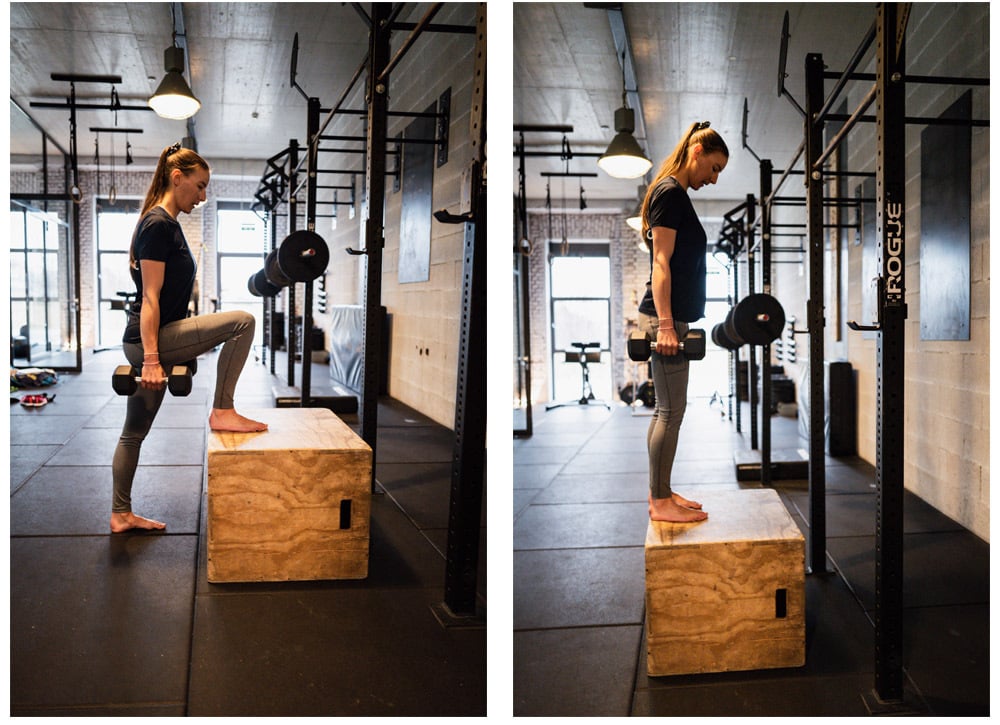
Deadlifts
This exercise strengthens the quadriceps, hamstrings and glutes and also addresses your upper body stability.
- Stand behind a barbell on the floor with your feet hip-width apart and the bar over the centre of your feet. Bend the hips and knees to grip the bar.
- Keep your chest up, hips back, stand stable on both feet. Make sure your lower back remains neutral by activating your abdominal muscles.
- Pull the bar up close to your shins and extend your knees and hips simultaneously and explosively. Push through your heels, lift the barbell straight up and drive your hips forward as you lift. Always keep your arms straight; weight is lifted by getting up out of your legs only.
- Hold the upper position for two seconds.
- Return the bar straight down to the floor by flexing your hips and knees slowly.
If you are new to this exercise, perform three sets of 10 to 12 reps with a light weight. To progress, increase the weight and reduce to three sets of six to eight reps. In case you are uncertain, perform the exercise under the guidance of a sports therapist or strength coach.
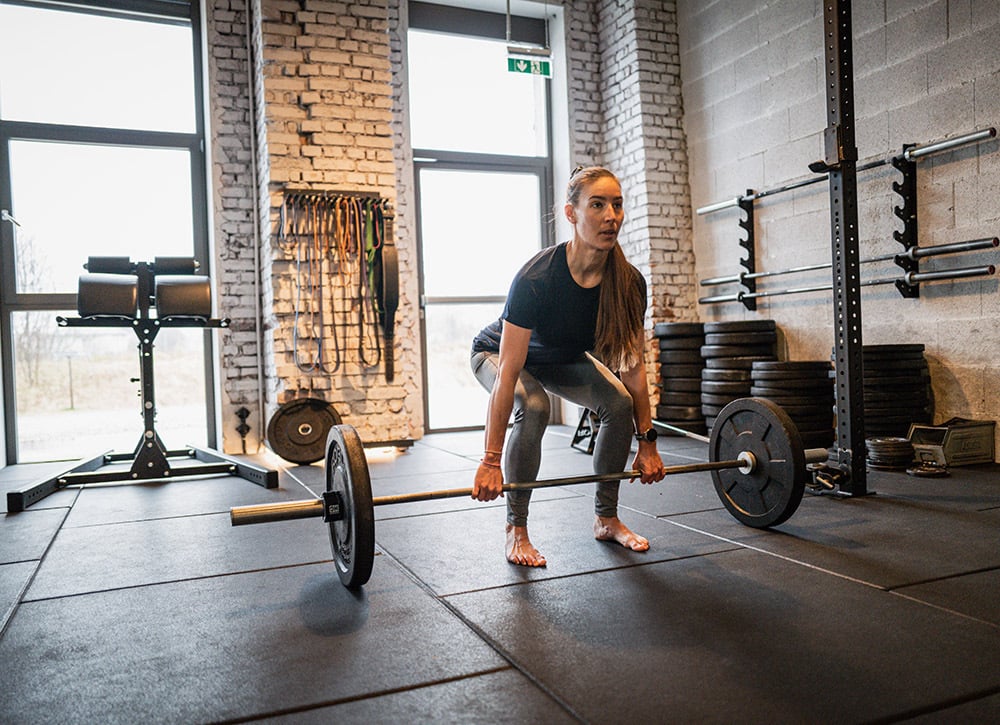
Heel raises
Stand on a box or a stair with your feet hip width apart. Raise your heels up while keeping your knees straight. Slowly lower your heels underneath the edge of the box. Rhythm: one second up, three seconds down. Use two dumbbells to add weight.
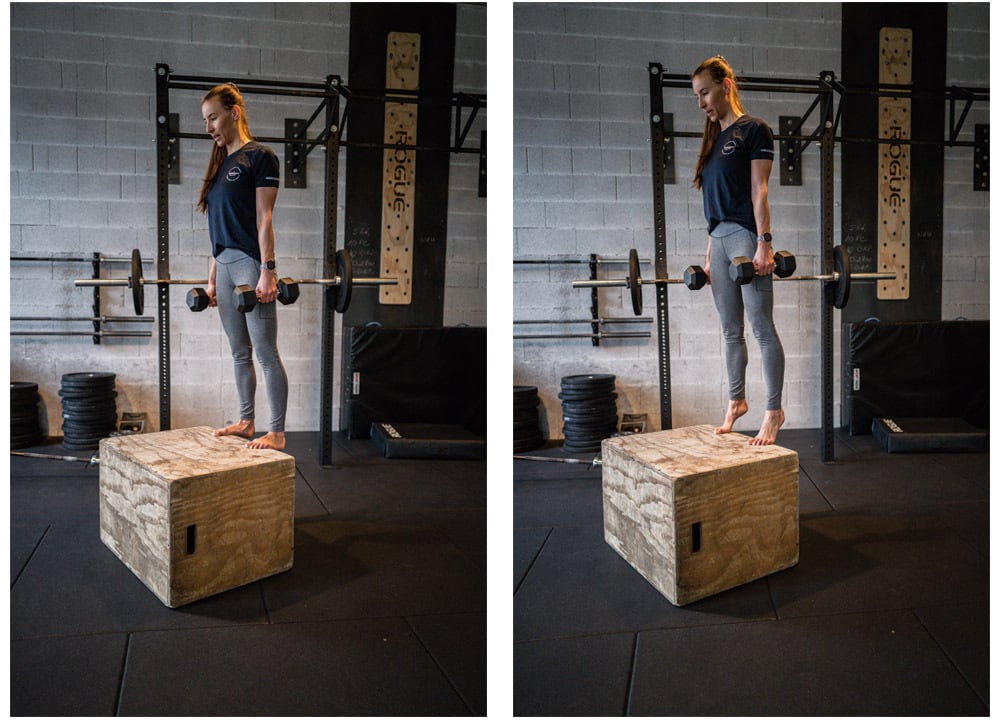
Romanian deadlifts
The Romanian deadlift is a variation of the traditional deadlift.
Grip the bar shoulder width, pinch your shoulder blades together and keep your chest up. Lower the bar down to your shins by moving your hips backwards and leaning your upper body forwards while keeping the bar as close to your body as possible. Bring your hamstrings to full stretch. Return into starting position by pushing the hips forwards. Always keep your lower back fixed!
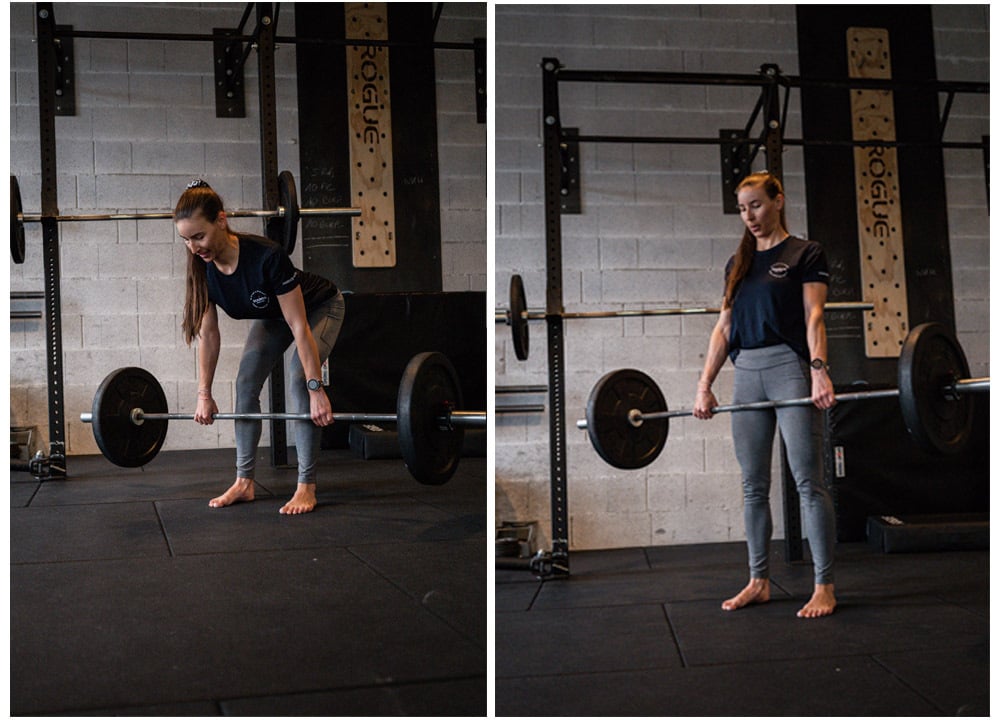
Barbell row
Grip the bar shoulder width, bend your upper body forward (up to horizontal to the floor). Slightly bend your legs and hips. Hold your spine ina neutral positon and activate your core muscles. Pull the barbell up to your belly button and squeeze your shoulder blades together. Slowly extend your arms again. Repeat. Focus on your upper body and legs to remain stable.

Single leg hip thrust
Lie down with your shoulders on a box or bench. Raise one leg up straight in the air and keep the other foot on the ground (ankle underneath the knee). Lift your pelvis from the ground until your shoulders, pelvis and knees form a straight line. Lower the pelvis down to the floor again.
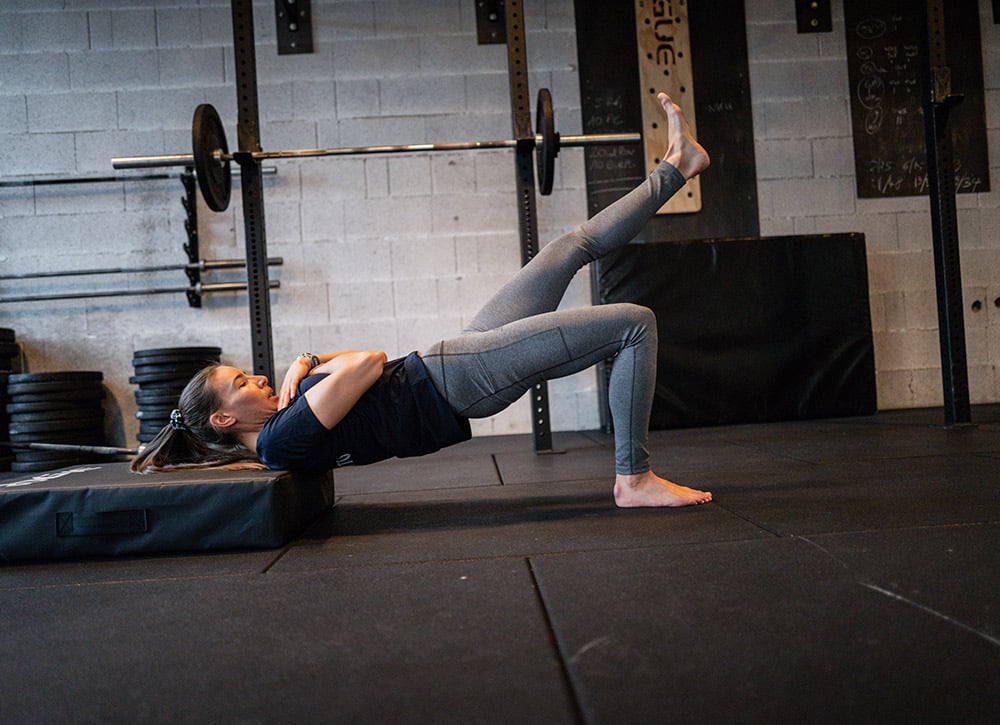
All images: By Philipp Reiter at Sportssupport in Salzburg.